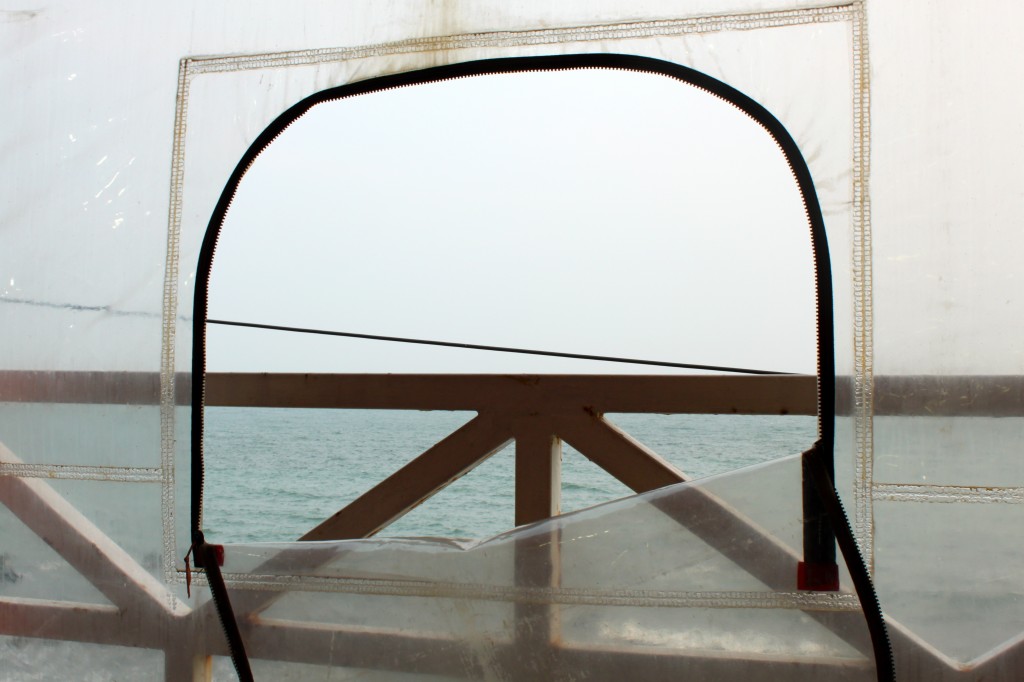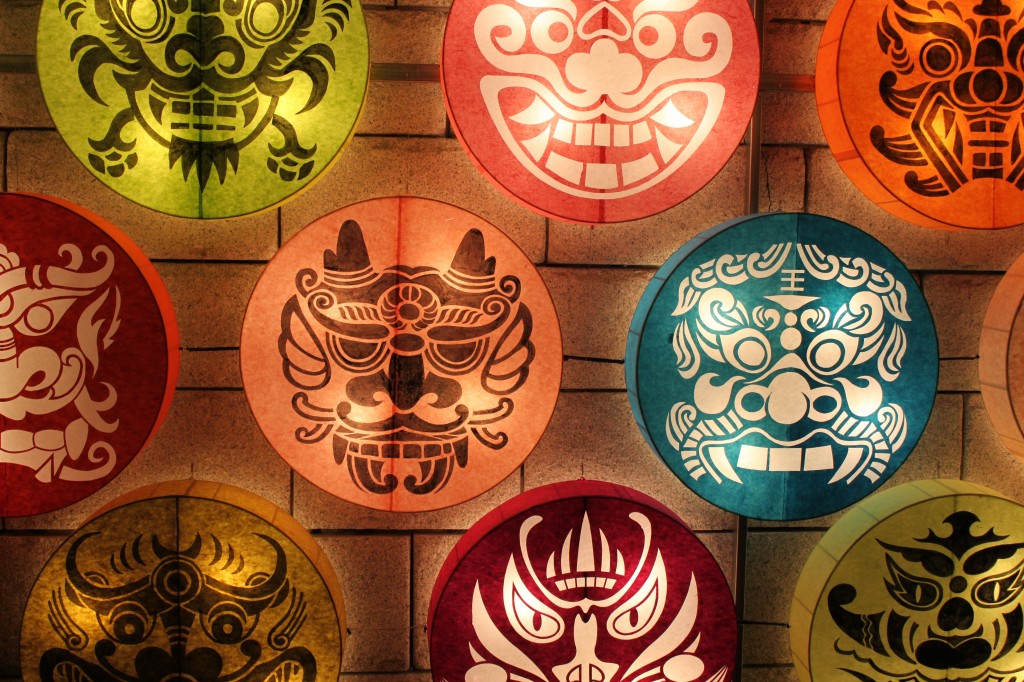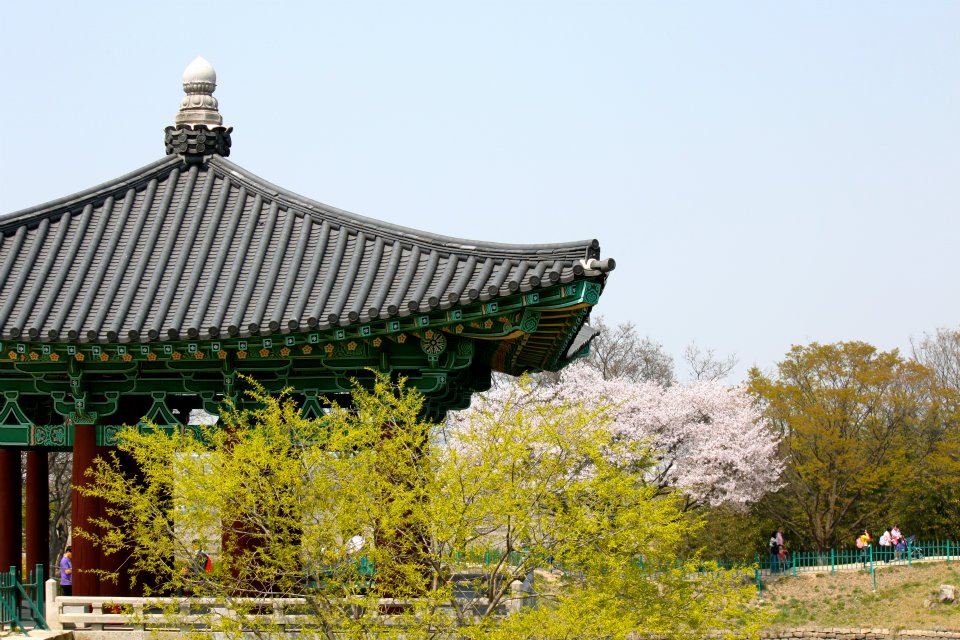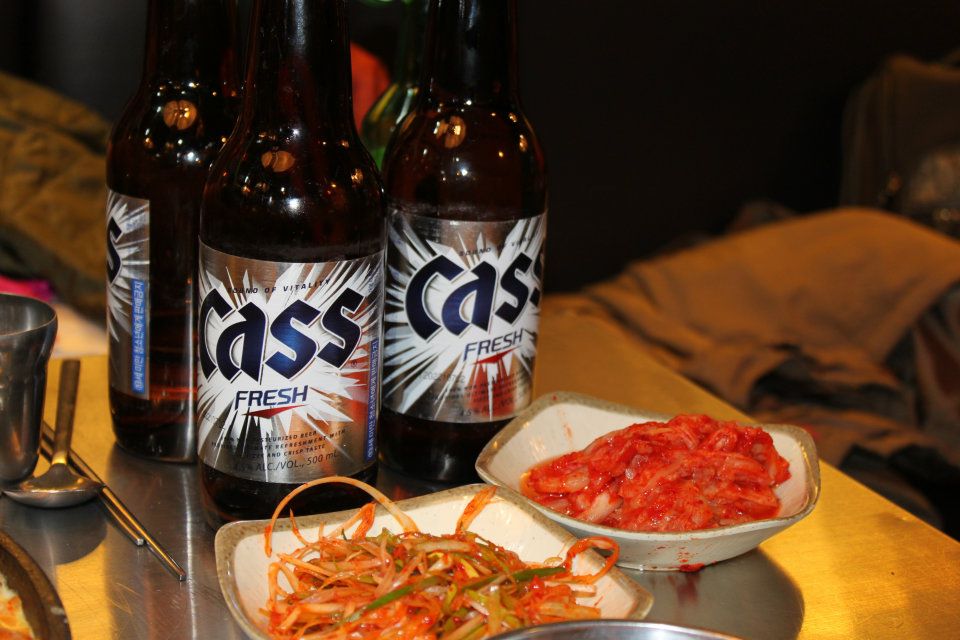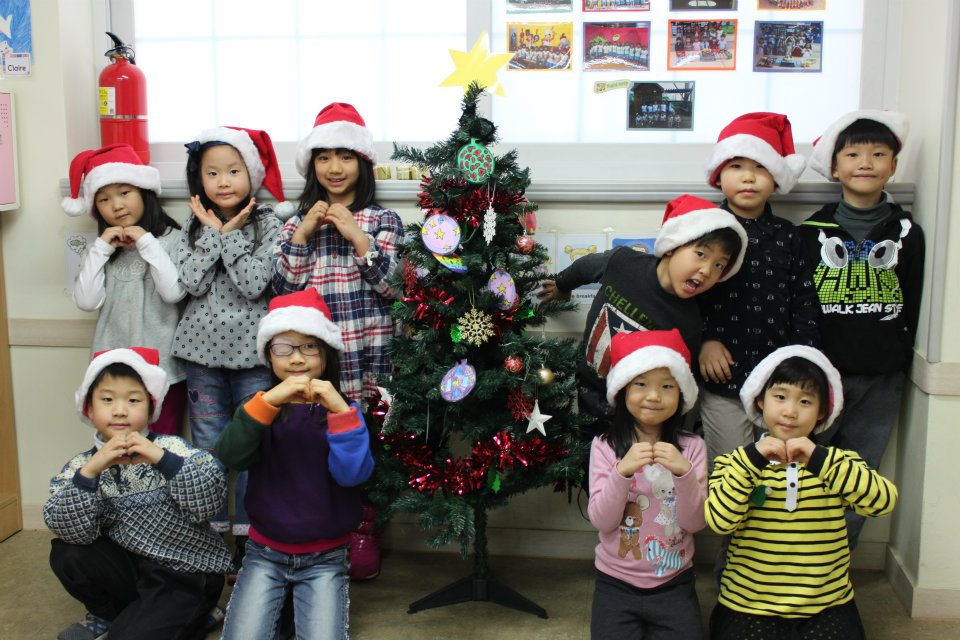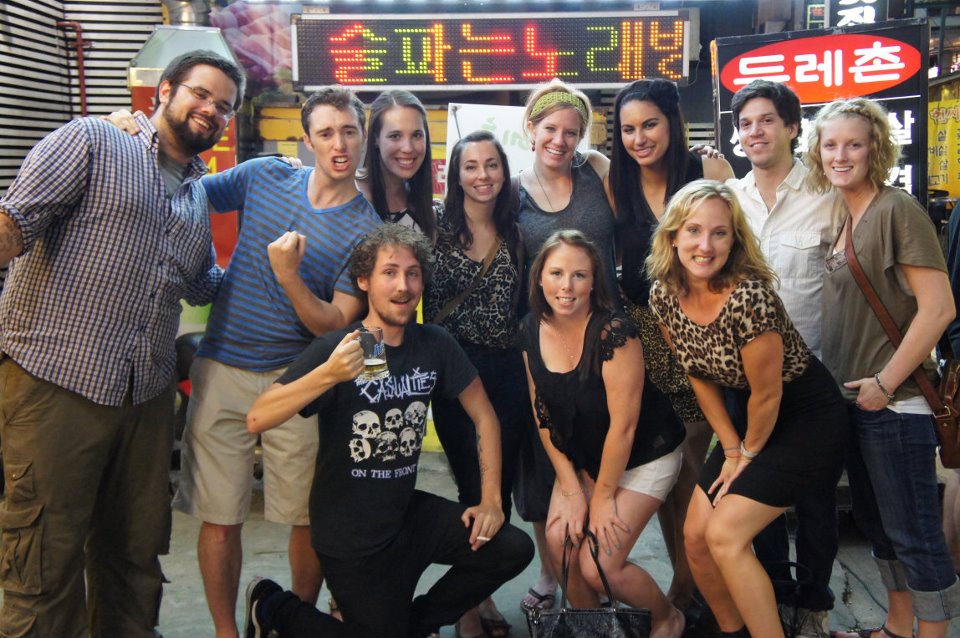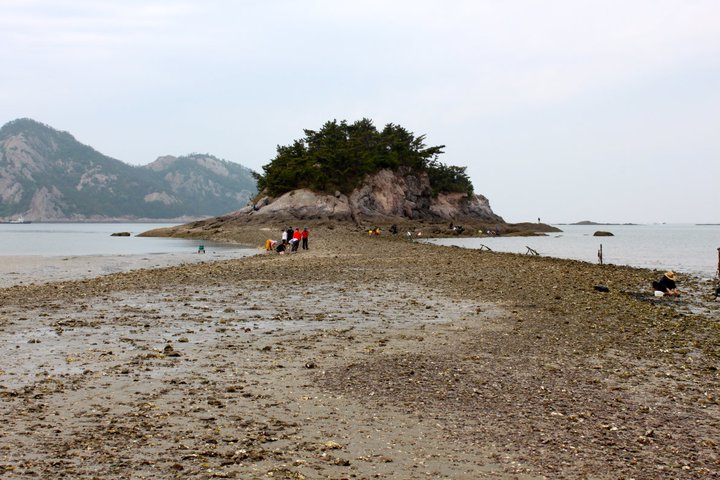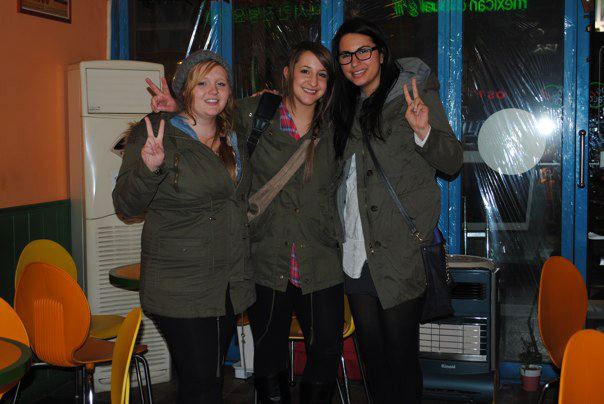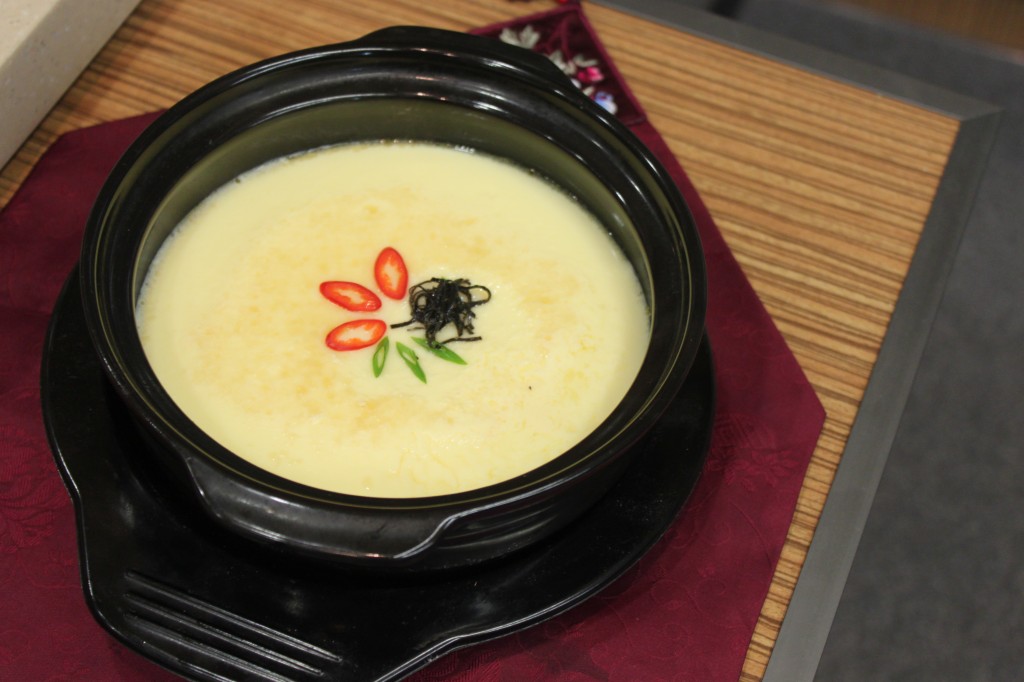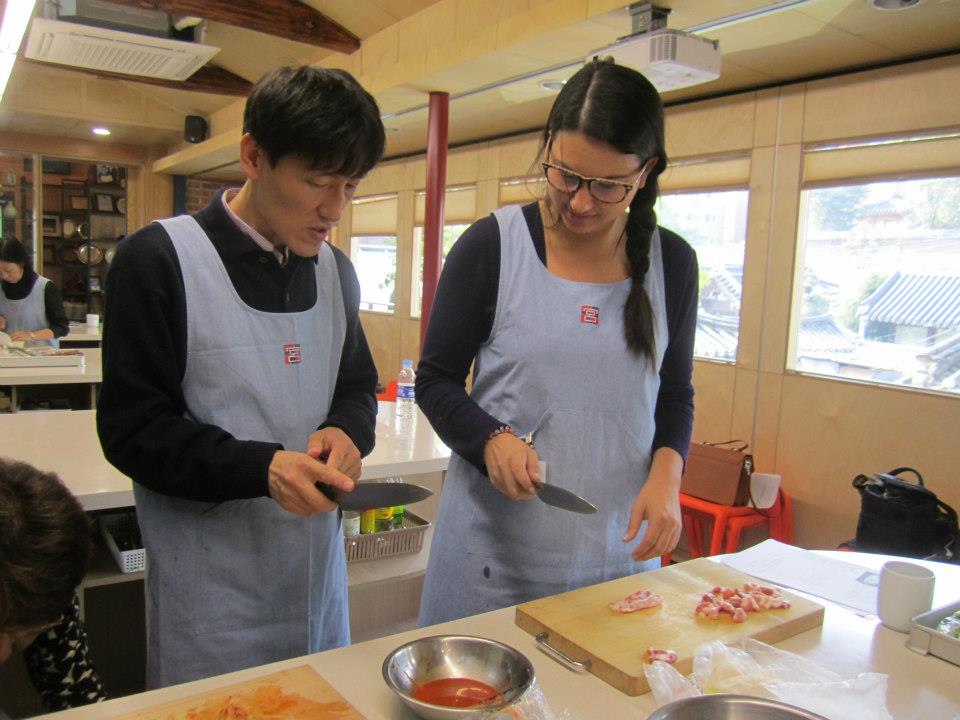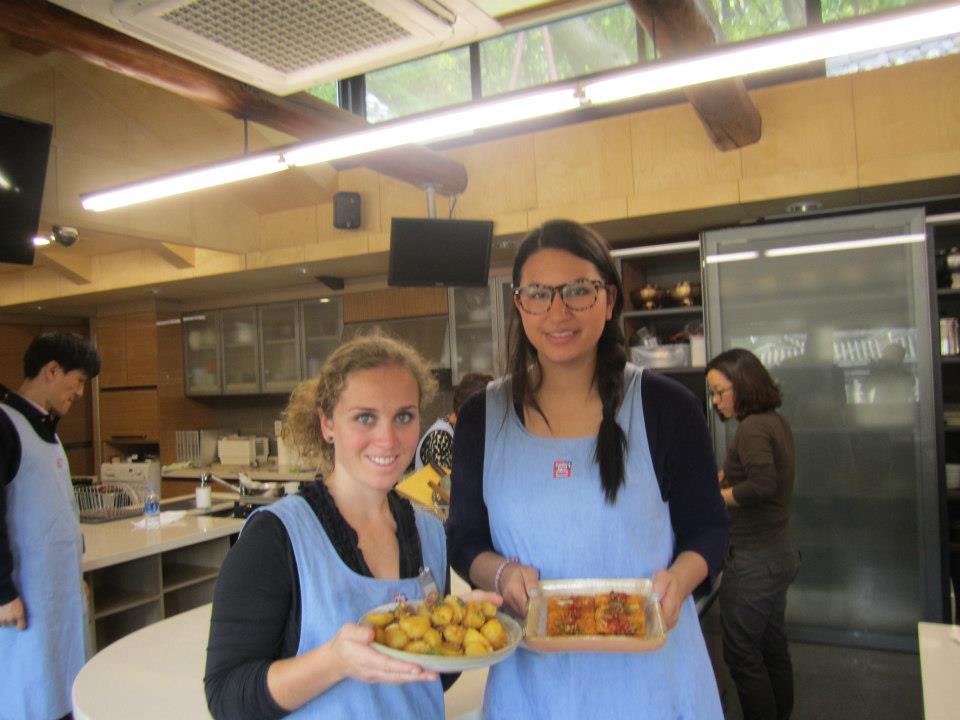Snapshot Sunday: Busan, South Korea is a post from: Farsickness
]]>Snapshot Sunday: Mureung Valley, South Korea is a post from: Farsickness
]]>Snapshot Sunday: Seoul Lantern Festival is a post from: Farsickness
]]>This week’s selections come from a trip I took with my school to Jeju Island, South Korea last December. This was my second trip to Jeju and although we were visiting what is touted as “Korea’s Hawaii” in the winter, the weather was spectacular, letting us take in a lot of Jeju’s natural beauty.
Snapshot Sunday: Jeju Island, South Korea is a post from: Farsickness
]]>Korea changed me. This country forced me to grow up a little bit more. It forced me learn to about myself. It forced me to become a stronger person. When I was sitting aboard an Asiana Airlines flight almost two years ago to the day, I hadn’t the faintest ideas what the next 730 days would hold and I couldn’t have guessed even if I’d tried.
Coming to Korea in February 2011 was a fairly rash decision. I’d quit a job I hated in September and moved back in with my parents. Except my parents had also moved, from my childhood home in Michigan to Kentucky, so I was in a city where I knew absolutely no one save my mother and father, had no job or social activities to force me to meet people or leave the house, and had no clue where I was going or what to do. I applied for countless jobs around the United States, still unsure of what I wanted to do, and either heard nothing or found myself reading a rejection email a few weeks later.
In January I had a promising job opportunity at an exciting company and traveled to Chicago for a final round interview. When I found out a couple days later that I hadn’t been offered the position, I laid in bed crying for a few hours and then emailed my friend Danielle who’d moved to Seoul to teach English a few weeks earlier. She said she liked it so far.
That was all I needed. I immediately started contacting recruiters and gathering the various documents needed for the visa. About a week later I was signing a contract.
I landed in Seoul on February 27, 2011 with a bunch of suitcases and zero expectations. The only Korean words I knew were kimchi and soju. A school employee drove me to Gangdong-gu, handed me a bag with a bottle of water, roll of toiler paper, and package of cookies, and left me in an empty apartment. I had no idea what the hell I’d gotten myself into.
A couple of days later I found myself standing in front of 12 six year olds, their eyes wide, ready for me to do something. My palms were sweaty and my voice shook as I spoke. But somehow, 12 months of really long days later I sat on the floor of an auditorium hysterically crying as I said goodbye to the small children who had somehow taught me so much despite their lack of years. I moved apartments and changed jobs, ready for the second year in Korea that I’d never planned, not yet ready to say goodbye to this place or the people I’d met.
Teaching, working, and living in Korea, the good and the bad, changed my life and who I am. Yes, it’s a huge freaking cliche and you probably heard it from all your friends after their junior year semester abroad, but it’s true. Living in a foreign country allows you to fully examine who you are because you are placed in this completely new environment with people you don’t know.
What did I learn about myself in Korea?
1. I am an introvert who is somewhat shy and reserved…
I can be shy. I have a hard time sticking up for myself or making my opinions known, especially in work settings. I’m also an introvert. I could easily spend days by myself reading, writing, and screwing around the Internet. I mean, I like going out with my friends and doing things, but I also need some time to decompress.
I’ve known this for a long time but I always thought it was a bad thing that I wasn’t the bubbly, outgoing girl that I thought the world wanted. Through growing up and meeting other, similar people I realized that being a shy introvert isn’t bad. It’s just me.
2. …but I can assert myself when necessary.
As a foreign English teacher in Korea, especially at a hagwon, it can be easy to get taken advantage of. I spent a year working for some of the most inane people I’ve ever met and it forced me out of my shell. I learned to stick up for myself and to say no, something I’d before been horrible at. When our directors suddenly changed two weeks before my contract was due to end and my end of contract flight money was in jeopardy, I made it known that I was pissed.
Before I had been scared to stick up for myself and be assertive, but now I know that it actually feels good to let your opinion be known in situations that really matter.
3. I can speak in front of a group of people without hyperventilating.
I’ve always been terrified of public speaking. You know the first day of classes in college discussion sections when you have to introduce yourself? I’d have heart palpitations before saying my name, hometown, and major in front of 15 of my peers. One of my biggest fears about coming to Korea was having to stand up in front of people and talk all day. I soon realized that with kids, it’s pretty easy. But then open class happened.
Open class is a day when parents come and watch their children’s classes. They then fill out evaluation forms about the teacher. So I basically had to put on a show for 12 stoic faced Korean mothers who were paying a lot of money for their children to attend to this school while they judged me. It was horrifying.
After about four of these, though, I realized I could get through it. That even though they were judging me, they weren’t complete insane people with little regard for other humans. I’ll probably never like public speaking, but I can do it if absolutely necessary without having a panic attack.
4. Bad things suck, but good people make them better.
My first year in Korea was this strange mix of not great and so awesome. My job was a disaster (except for my amazing students). I worked nearly 11 hour days, with little vacation time and no sick days. My bosses were unorganized and inept. They had unrealistic expectations and very little managerial strengths. And did I mention I was teaching 8 or 9 classes a day? There were many days I spent my lunch break on Delta’s website contemplating buying a ticket home.
But the people I met that year made staying worth it. I was lucky to have an amazing group of coworkers turned friends who were all in favor of going to 7-11 after work for beers and bitching. Which turned into whiskey shots, 5 am Burger King trips, and cab rides debating over whether or not it is okay to start a sentence with the word and.
These people made my time in Korea really memorable and taught me that with a lot of good people in your corner, you can make it through a lot with a smile on your face.
5. I want to write.
This is probably the most important thing that I learned in Korea, and it’s funny because writing is what I wanted to do for the first 18 years of my life. From a young age I always had my nose stuck in a book and first dreamt of writing the next Great American Novel before turning my aspirations to being a sports journalist. Once I got to college, a huge college without a journalism degree, I got lost. There were a lot of paths I could’ve gone down to achieve my original goal, but for a lot of reasons, I didn’t.
Then I got to Korea and started blogging. I realized again how much I like to write. People started to read. I got some good feedback (okay, it was mostly from my family). I realized I needed to get over my fears of not succeeding or not being able to write well and actually make this happen. I want to write.
I am excited for what’s to come, but I say goodbye to Korea with a somewhat heavy heart.
안녕히계세요 and 감사합니다.
What have you learned about yourself through travel and life abroad?
Farewell Korea: What I Learned in the Land of the Morning Calm is a post from: Farsickness
]]>Luckily, there are a few enterprising people here in Korea who have started businesses to help us longing expats by bringing what we miss straight to our mailboxes. Unfortunately, while they still can’t ship you your mom when your sick or a six pack of Bell’s Two Hearted Ale (a girl can dream), they have devised a way to conveniently sell us expats the food we crave from home.
Gringos Burritos
Mike and Mark are the masterminds behind the delivery burrito company Gringos. After a disappointing night out at a Mexican restaurant in Itaewon (I think all expats in Korea can tell a similar story), these two expats from Canada and the US (Los Angeles), respectively, decided to do something in order to introduce the real taste of Mexico to the Korean peninsula. Gringos was born.
Mike and Mark decided on a delivery service for two reasons, opening a restaurant can be quite costly and delivery would allow them to reach more customers. The majority of the ingredients for the Gringos menu come from the local market, with a few harder to get items coming from Costco. Mike and Mark both work full time as English teachers and spend their free time working to make Gringos a success, putting in time after work on the weekdays and spending 12-14 hours a day assembling the burritos on the weekends.
Gringos currently offers five different burritos and three side items. I tried the carne asada, chicken, tofu, and bacon breakfast burritos. While they aren’t Chipotle, for frozen Mexican delivered to my door in Korea, it did the trick. My favorites were the carne asada and bacon breakfast burritos. I also tried the salsa and refried bean side dishes. While I wasn’t a huge fan of the refried beans, the salsa was the best I’ve had in Korea and reminded me of my favorite local brand back in the United States.
The prices are reasonable at 5,500 won per burrito (except for the carne asada which is 7,000 won) and each order is shipped frozen at the beginning of the week in a styrofoam container. There is a minimum of six items per order.
For more information or to place an order visit their website.
Alien’s Day Out
Mipa Lee, a vegan who has been living in Korea since 2006, started her blog Alien’s Day Out to chronicle what it is like to be vegan in a country known for its grilled meat. When she realized that it was hard to find animal free baked goods here, Mipa began experimenting with the recipes of some of her favorite treats that she had missed since going vegan. After getting a lot of good feedback from family, friends, and customers at local events, she started the Alien’s Day Out online bake shop in order to share her love of compassionate eating.
I first ordered from Alien’s Day Out my first fall in Korea. I’m not vegan (or vegetarian) but I was craving pumpkin baked goods something fierce and was introduced to Alien’s Day Out by my coworkers. My pumpkin chocolate chip bread satisfied my autumn baked good needs and I was hooked.
In addition to bread, Mipa sells muffins, cookies, and takes custom orders for cakes and cupcakes, which are beautiful. Most recently I ordered chai muffins, banana nut bread, and an order of the “surprise me” cookies. The chai muffins were the perfect breakfast, filling with just enough spice and the banana bread was the best banana bread I’ve ever had. It was sweet and incredibly moist. My favorite of the package, though, was my order of surprise cookies. The “surprise me” cookies gets you one order of an off the menu item. I received some tea cookies that were amazing. Like, beyond amazing.
If you’ve never had vegan treats and are scared they won’t taste good, don’t be. If you’re ordering from Mipa you’ll have no idea these are animal product free!
For more information or to place an order visit her website. You can also purchase Alien’s Day Out baked goods at High Street Market and Botton Cafe in Itaewon.
Hummus in Korea (Closed as of December 2014)
Katie and Jared are the expat couple behind this relatively new hummus delivery business. The engaged American and Kiwi duo started making hummus for dinner parties and camping trips with their friends in Korea. The hummus was a hit and they decided to turn their hobby into a business. Hummus in Korea started off as a smaller operation, with orders being delivered by hand in the Bundang area only. After pressure from some friends in Seoul and Chuncheun, though, Jared and Katie decided to start delivering around the country.
Katie and Jared use their free time during the week to prep the hummus, which is frozen before it is shipped. They explained that hummus lasts only 7 days in the fridge but can last up to 4 months in the freezer. Shipping takes 2 days, which would cut down drastically on the time the customer would have the enjoy the product.
Hummus in Korea currently offers 4 flavor of hummus: Jalapeno Heaven, Roasted Red Pepper, Crazy for Garlic, and Spicy Sensation and prices range from 5,500 won to 6,500 won for a 250 gram container. I tried the Jalapeno Heaven and Crazy for Garlic flavors. The texture was a bit different than what I normally expect from hummus (Katie and Jared explain that this is due to the freezing), but the flavors were phenomenal. The jalapeno was my favorite- just enough spice to keep it interesting, but not so much that it overpowered the other flavors.
Katie and Jared have said that they want to keep Hummus in Korea a somewhat small operation, but as long as people want to buy it, they will be there to sell it!
For more information or to place an order visit their website.
What delivery option sounds the best to you?
Delicious Delivery Options in Korea is a post from: Farsickness
]]>The vast majority of English teaching jobs in Korea are at hagwons, or private language academies. Amber wrote last week about teaching adults, and today I am going to focus on hagwons that cater to the pre-K to high school students. It’s hard to generalize what it’s like to work at a hagwon because no two hagwons are the same and every teacher will have a different experience. That being said, I will try my best to describe the different type of working environments you might find yourself in order to give you a better sense of what you’re signing up for.
Chain or Independent
There are two main types of English language hagwons in Korea. The first is the “chain” hagwon where companies operate many branches around the country. Some of the popular chains include Avalon, YBM, Korea Poly School, Chungdahm, and SLP. These companies often create their own materials and have a standard curriculum to be followed at every branch. Most chain hagwons are larger than independently owned academies, and have many foreign teachers. Some teachers view hagwon chains as a more stable work environment; they may be less likely to close because of an increased financial backing, but they also offer less flexibility. I worked at a hagwon chain my first year in Korea, and while I never worried about being let go early to save money, I had to deal with some corporate policies that were frustrating.
The other type of hagwon is an independently owned academy. These schools are generally much smaller and often only have a couple of foreign teachers (some may have just 1). An independently owned hagwon may give you more flexibility with lesson planning, and if you have a good boss, it could be a dream. An independently owned hagwon is a little less stable and some schools have been known to let their teachers go early to avoid paying severance and flight allowances.
Like I said in my post about getting a hagwon job, it is to your benefit to research your exact school. If you’re working at a branch of a chain, look at reviews of the exact location as they can vary wildly.
Kindergarten, Elementary, Middle, High
Different academies cater to different ages of students- kindergarten, elementary, middle, high school, or some combination of the four.
A kindergarten offers English immersion education for students who are usually between the ages of 4, 5, and 6 (Korean age 5, 6, and 7) and have not yet started Korean school. The students attend class from about 9:00 a.m. to 2:00 p.m., but teachers are usually expected to come early and stay later to prepare lessons. The types of classes taught varies. At my school I taught writing, vocabulary, science, reading, and art. The students also attended a gym class taught by another instructor. Each class was 40 minutes long and we were expected to cover a certain number of pages a month, including workbook pages to be completed by the students and graded by the teacher. The students were tested on the material once a month. Other kindergartens have a more, shall we say, relaxed curriculum that focuses on language acquisition through more age appropriate activities like art, cooking, and play.
Elementary, middle, and high school academies provide after school language instruction. Because of this, these programs start later in the day, usually around 3:00 p.m., and can run until as late as 10:00 p.m.. If you teach only elementary, middle, or high school expect to start work midday.
Elementary school hagwon classes are generally between 40-50 minutes long and cover different aspects of the four tenants of language: reading, writing, listening, and speaking. Often there are also other subjects such as math, debate, or current events. At my school we were given page numbers to cover in each class, but were free to cover the material however we chose.
As students get older, English language hagwon attendance begins to get smaller, and the students left are those serious about the language. Because of this, the classes become more intense and start to focus more on preparation for the many English exams they will have to take in high school and college.
Other Expectations
Besides teaching the actual classes, hagwon instructors are also responsible for the paperwork side of teaching. This may include submitting weekly lesson plans detailing everything you will do in each class, marking homework and essays, and writing report cards for the students. You also may need to create or print materials beyond the books that are given.
Most hagwons will require instructors to teach at least one open class during their contract. This is a day where all the parents come watch you teach. Korean parents are notoriously picky, and the class is often rehearsed for weeks beforehand. Open classes were my least favorite part of teaching.
Beyond language, hagwons are also sometimes used a tool for cultural immersion. Holidays that are popular in English speaking countries, such as Halloween and Christmas, are often celebrated with gusto. My school turned our gym into a haunted house, went trick or treating, and held a Halloween themed spelling bee at the end of October and Santa came and visited in December. These activities, and the monthly birthday parties, were a fun time to see the students doing something other than sitting behind a desk.
Pros
Get to really know the students: Because hagwon instructors teach smaller classes and see the students more than once a week, it is much easier to get to know them than if you teach at a public school. I formed bonds with many of my students, from kindergarten to sixth grade. I knew about their families, hobbies, dreams, and every mosquito bite they got in the summer. At the end of the year I was tearful during our goodbye.
Easier for those with no teaching experience: The only thing I’d ever taught before coming to Korea was swimming lessons. I didn’t even have a certification to teach English. Getting a hagwon job made the transition a little easier. I was given books and told which pages to cover each day and given ideas of activities to do during class. The set curriculum helped me feel at ease in the classroom fairly quickly.
Foreign coworkers: If you work at a public school you will most likely be the only foreigner at your school. Hagwons, especially the larger ones, often have more than one. My school had 15! This can be a blessing or a curse, depending on who your coworkers are. I became very close to many of my coworkers at my first school. Without these people I probably would’ve never survived the job. And I probably would’ve spent a lot less money on beer ![]()
Cons
Lack of vacation and sick time: The standard vacation time at a hagwon is 10 days, usually 5 in the summer and 5 in the winter. These days are often picked for you, and my first vacation was scheduled Thursday-Wednesday making it even shorter. In addition, most hagwons don’t offer sick days. While some will let you stay home (without pay), others will make you come in. There’s nothing like teaching a class with tonsillitis bronchitis, and a 104 degree fever!
Parent pressure: Hagwons don’t come cheap and parents are the last ones to forget this fact. Because of this, hagwon bosses will do whatever it takes to make the parents happy- even if it makes absolutely no sense to you as a teacher. A lot of hagwons have cameras installed in the classroom so parents and bosses can easily monitor the teacher’s behavior. If the parent doesn’t like something, they will let it be heard. Loudly.
Lack of communication: This isn’t exactly hagwon specific, it’s more a reflection on Korean culture in general, but many hagwons suffer from a severe lack of communication. Teachers find things out at the last minute, and this usually creates extra work, extra stress, and extra disdain for the workplace.
Stats for Hagwons
Hours per day: 5-12 (this varies, and I wouldn’t suggest taking a job that has you working more than 8 hour days with a maximum of 6 teaching hours)
Days per week: Usually 5 (Saturday and Sunday off)
Average salary: 2,000,000-2,300,000 won a month
Vacation: 10 days per year plus all Korean holidays
Classes: These vary, but usually no more than 15 students with smaller class sizes for younger students.
Have you worked for a hagwon in Korea? What do you think?
Teach English in Korea: What It’s Like to Work at a Hagwon is a post from: Farsickness
]]>Today’s post, by Amber, an American who taught in Korea for over a year, is about what it’s like to work at an adult hagwon.
When I arrived in Korea, there was no one waiting for me at the airport with a sign. I didn’t have housing arranged prior to my arrival. I drug my two giant suitcases through Incheon Airport, called my new boss on a payphone to let her know I’d arrived, and bought myself a bus ticket to Seoul. Once I got to the stop my boss had told me to go to, a man jumped from the crowd, asked if I was Amber, took my suitcases, and gestured for me to follow him to the hagwon where I’d be working for at least the next year.
I’ve heard from friend who worked with children in Korea that they were taken from the airport to their new apartment – one that the school provided for them. I was taken from the hagwon, where I briefly met my coworkers that first night, to a Korean love motel. Ah, love motels – cheap, sketchy places where most clients only pay for a few hours with someone they’ve just met at a bar or club. I stayed there for a week while training at my new hagwon and trying desperately to find a place to move into. And in case anyone is wondering, love motels don’t have thick enough walls.
The thing that I need to stress most about working for an adult hagwon is that no one holds your hand during those first few weeks in Korea, unless you have good fellow ex-pat coworkers – which I, fortunately, did. You get a housing stipend, not a furnished apartment provided by your school. And as far as training…let’s just say you will be teaching your first class when you’re still jet lagged and disoriented and barely familiar with any of the materials.
My training consisted of my boss – a very nice albeit hopelessly disorganized and high-strung woman of about forty – sitting with me to explain that “Some students just won’t like you,” and “Here’s how we handle complaints from students,” and “You need to learn these five different book series – this one on conversation, this for business students, this for lower level students, this for advanced students, and this one on Western culture for students that will be traveling. Oh, and if you have a student who wants something else, you just have to make your own lesson plan.” For a recent college graduate with no traveling or teaching experience, this was – to put it mildly – rather overwhelming.
I had gotten to Korea on a Wednesday and taught my first class that Friday. When I was chosen for the job, they’d assured me that I’d have a week of training since I was inexperienced, but they were so swamped with students that they had no choice but to toss me to the sharks early.
Each class lasts for fifty minutes, and they are one-to-one classes, which means every student is learning something completely different from every other student. I typically taught five to seven classes per day, and I worked a split shift. This meant that typically I taught 6:30AM-11AM and then 5PM-9PM. The middle of the day is free time. From what I understand, most adult hagwon jobs are like this. We have to teach when the students aren’t at work, and that means early morning and late night. Sounds terrible, right? It’s not nearly as bad as it sounds, and you do get used to the weirdness eventually. You get used to functioning with less sleep, and you find fun things to do during the day when the rest of your friends at other jobs are chasing children around a classroom. I, personally, used to catch up on my favorite American TV shows during that time.
A typical class went something like this. The student arrived – usually on time, but some were always tardy – and I greeted them with a bit of small talk to get them in the English frame of mind. Then we reviewed their homework together and discussed any mistakes they made. I kept track of any mistakes they made while speaking during the lesson on a word document – their lesson report. I’d print it after class and give it to them to study for next time. The middle part of the class depended on which topic the student was learning. Conversation students used a book series that had four chapters per unit, and we covered one chapter per class. Business students typically had specific things they wanted to learn for work – financial terms, vocabulary for business meetings, email writing. I also taught interview preparation, writing, travel English, and academic English.
So, what is expected of you as a one-to-one instructor for adults? It varies. Some students have very specific expectations, and if you don’t meet them, they will complain. They probably won’t talk to you directly, because Koreans are pretty passive in general when it comes to confrontation. But, they will complain to the secretary, who will tell your boss, who will not sugar coat anything when he or she tells you about it. One month after beginning my teaching, my boss told me I had my first complaint. “Mr. Lee says you’re not a good teacher. He told me that he doesn’t feel like he learns anything in your class and wants to switch to someone better.” It made me cry once I got home that afternoon, and the next time I saw that student, I wanted to smack him. But after a few incidents like that, when you realize some students expect you to work miracles and make them magically fluent in English, you develop thick skin and the criticism just bounces off. You also learn what the students tend to look for in a class. After six months of teaching, I never got anymore complaints.
Allow me to list for you all the pros and cons of a job like I had. Perhaps it will help anyone interested in Korea and teaching to decide whether or not it’s the right choice for you. It might seem like a crazy job, but I was ultimately happy that I decided to work there. I met some of the most interesting people and taught students aged 15-70+. I loved my coworkers. I got along well with my bosses. But it wasn’t all great. So, here goes:
Pros
Interesting students – I taught CEOs, athletes, bankers, teachers, college students, Samsung employees, elderly people, et c. I still keep in touch with some students now that I’m back in the US. I went to dinner with students, drank with them, and became friends with many. I enjoyed teaching 95% of them. Though I mentioned complaints above, I will say that I had maybe five students my entire time there who I didn’t like. Everyone else was great.
Freedom – I could pick my apartment, my bosses didn’t hover, and it was a generally relaxed environment to work in. I was blessed with the best coworkers – five other foreigners from the US and Canada – who I am certain I will keep in touch with for the rest of my life.
Free time during the day – Split shift is not easy at all, but if you have the right attitude, you can learn to enjoy it. I cherished my daytime free time. It meant I was never at the office for more than three or four hours at a time, which I loved. I could go for a walk and get some air during the day.
Great resources and facilities – I had my own office with a computer and desk plus a whiteboard. I never had to get any of my own supplies. We had a great printer and copier plus any books we could possibly want to teach from. The computers were all linked by a network so we could share materials with one another.
Cons
The hours – The hours, though I did like that free time during the day, were terrible. I was literally always tired. I learned that I got too groggy if I napped during the day, so I was functioning on maybe five hours of sleep per night. I’d get home close to ten, have dinner, get ready for bed, fall asleep by midnight, and be up at five again to get ready. I got sick a lot.
Vacation – Ten days. That’s it. And in order to take more than two off at a time, you have to tell them way in advance. My family visited for a week, and I was able to take five days because I told them five months in advance. But then they still made me teach a class during that time because the student refused to reschedule. It still counted as a vacation day.
Sick time – Eight hours. You are allowed to miss eight classes if you are sick. That’s it. I got severe tonsillitis that wouldn’t go away for three weeks. I had a 102 degree fever, no voice, and was extremely dehydrated because I couldn’t swallow, but they made me teach every single scheduled class. My boss avoided me during that time, perhaps worried I would complain (though I’m not one to complain in those situations) and the only time she spoke to me was to remind me that I had no more sick time to use because I had gotten the flu earlier in the year. Worse than that, a coworker had to get surgery and was forced to take his vacation time for his recovery.
Stats for Adult Hagwons
Hours per day – 5-7 during the week, 4 on the weekend, max is 8, min is 0 (there were days that all my classes canceled)
Days per week – Usually 6 (Sunday is the only day off)
Average salary – 21,000-25,000 per year, paid once per month.
Vacation – 10 days per year plus all Korean holidays
Classes – One on one
Author Bio: Amber is a 24-year-old aspiring author. She graduated in 2011 with a degree in English. She enjoys traveling and hopes to one day tour Europe and Asia. She taught English in South Korea for sixteen months and is now back in the United States. Currently she is applying for jobs as a programs assistant at university study abroad departments, because she hopes to share her experiences living abroad with students hoping to study abroad as well as to help incoming international students adjust to life in America. If you have any questions about living or working abroad, or further inquiries about teaching at an adult hagwon, contact her at [email protected]. You can also check out her blog at http://amberauthor.wordpress.
Teach English in Korea: What It’s Like to Work at an Adult Hagwon is a post from: Farsickness
]]>Today’s post is about how to find a public school job in Korea and is written by Clare, a middle school teacher in Bundang.
In the current economy finding a job in South Korea has become very competitive. University graduates are fleeing their home countries due to lack of jobs, and are landing upon Korean shores in the hopes of finding work here for a year or two.
Because of this getting a job in Korea is tough, and finding a coveted public school position in Korea is even tougher. So if you do decide to apply you should be prepared for all eventualities.
Below I have written five top tips that one should consider when applying for a public school job in Korea. But before you read on you should first decide on just where you want to teach in Korea, as this will greatly affect your application process.
Korea is largely governed by three different educational programs: SMOE (Seoul Metropolitan Office of Education), GEPIK (Gyeonggi English Program in Korea) and EPIK, (English Program in Korea). SMOE covers the Seoul area, GEPIK covers the Gyeonggi-do area, (which is the area surrounding Seoul) and EPIK covers the rest of Korea.
So once you have decided upon the area that you want to head to in Korea, you can then begin the application process. Here are five of my top tips for successfully finding a public school job in Korea through GEPIK and SMOE. They may seem basic, but they are all very important to remember.
1.You must have a teaching certificate.
This is a relatively new change that wasn’t in place when I first came to Korea back in 2008, but due to the recent cut backs in the public school systems both SMOE and GEPIK can now afford to be picky. Therefore in order to work in a public school in Seoul and Gyeonggi-do you need a 120 hour teaching certificate.
2. Go through a recruiter.
Whilst it is possible to get a position by applying directly to the program itself, I wouldn’t recommend it, especially if you are a new teacher still living in your home country. This is because recruiters can guide you through the entire process from beginning to end. They help you out with your visa, they proof-read your application package and give you advice where needed. Some recruiters even welcome you at the airport and give you cell-phones and other goodies!
I personally used ‘Korea Connections’ for my SMOE application and ‘Korvia’ for my GEPIK application, and was very happy with both of their services.
3. Do not use multiple recruiters when applying through SMOE.
This is very important to remember. If you do apply through multiple recruiters with SMOE then your application will be rejected, and I don’t even know if you can reapply later or not.
However you can apply through multiple recruiters for GEPIK. This is because with GEPIK the school hires you, and with SMOE the education board hires you.
This is a point of confusion for teachers, and you should be aware of this before you start applying for jobs.
4. Finding a ‘great’ public school is difficult, but not entirely impossible.
It is a common truth in public school teaching that your school, co-teachers and location is random and you have no control over where you will be placed. This is true for Seoul, and if you do decide to teach in the capital then you won’t find out your location until after orientation, and by then of course it is too late to back out!
However, you can choose your school with GEPIK. So long as the school agrees to hire you then you can take a position anywhere that you want in Gyeonggi-do. After four years in Seoul I have made the move to GEPIK and I couldn’t be happier. Having control over location and schools has really made a huge difference to my time here in Korea.
5. Don’t read too much into the fear-mongering.
I want to end on a brief note about the cutbacks currently taking place in Seoul and apparently now in Gyeonggi-do. Because although I think it’s important to be aware that the landscape of public school teaching in Korea is changing, I also think it’s important to not read too many stories on the internet.
I advise you to only take note of the things that your GEPIK coordinator tells you, or of what your contact at SMOE passes down to you, or of what is written on their official websites. Because while sites like ‘daveseslcafe’ have their worth, they also help breed untruths based on misinformation and gossip.
Applying for a public school job may seem daunting but I think as long as you remember the above tips then you shouldn’t go too wrong. Utilize your recruiter well, keep asking them questions, and remember that they work for you! If you do all of this then you should have a good year here.
Author Bio: Clare has been an expat and teacher for 7 years. She is currently teaching EFL to middle schoolers in Bundang, Gyeonggi-do. When she isn’t teaching she’s updating her blog at: http://www.haiyasse.tumblr.com.
Teaching English in Korea: How To Get a Public School Job is a post from: Farsickness
]]>I first took a Korean cooking class my first month in the country, back when the only Korean food I’d really eaten was my hagwon’s absolutely disgusting lunch boxes. While I enjoyed the class, I didn’t get much out of it because I was still discovering my preferences inside Korean cuisine. Since I’ve become familiar with the food, I’ve been wanting to find another Korean cooking class.
With Kasey, a food lover and excellent cook, in town I knew it was the perfect time to sign up for a Korean cooking class at the Institute of Korean Royal Cuisine. She could learn more about an important part of Korean culture, and I could further develop my appreciation for it.
The Institute of Korean Royal Cuisine offers Korean cooking classes in English every second, third, and fourth Saturday of the month. The menu changes every week, and there is even the option to take a nine week course with certificate.
The course starts at 10 am, with an hour long demonstration of the dishes being prepared that class. Kasey and I unfortunately missed this part of the class, and rolled in at about 10:40 reeking of liquor after oversleeping, making a necessary trip to the convenience store, almost puking on the subway, and getting lost in a taxi. The night before had gone a little (lot) later than I’d originally planned, and we were now paying for it by having to walk into a full classroom 40 minutes late and scramble to find a seat. We were those students.
The institute’s location is absolutely beautiful, in a converted hanok, and the classroom is modern, bright, and large. After the demonstration finished, we split into groups of four and began cooking. Each person in the group was responsible for a dish, which immediately made me nervous. Someone who wasn’t Kasey or myself would have to eat this in an hour.
I was in charge of the dubu jorim, or soy sauce braised tofu. I plopped a big block of homemade tofu onto the cutting board and picked up a rather large knife. Lacking electrolytes and with the hangover induced shakes, I tentatively placed the knife on top of the block, ready to slice.
“I usually hold the knife a little closer, with my index finger like this.”
Doug, the translator and one of the assistants, came up behind me and demonstrated the correct way to hold the knife. The other assistants were flitting around the workspace, helping students as they needed it. Kasey was preparing her gamja sogogi jorim (braised potatoes and beef) solo, and the other two members of our group had the kimchi jjigae (kimchi stew) and dalkyalchim (egg souffle) under control by themselves.
Doug stuck to my side the entire morning. I wasn’t sure whether to be happy to have the help, or insulted that I looked like I needed it. Either way, it was nice to be in a cooking class with such individualized help.
After about an hour of cooking and plating, we sat down to enjoy the meal we had just prepared. All of the food was delicious, even my tofu that Doug had been so worried about, and it was interesting chatting with the diverse group of students enrolled in the class. Once we’d finished eating, we cleaned up and headed home- full, satisfied and in need of a good, long nap.
Visitor Information: For more information, visit the website or call 02-3673-1122-3. One class costs 40,000 won (around US$40) and includes all supplies, ingredients, instruction, and recipes. The nine week course is 320,000 won.
Do you enjoy taking cooking classes when you travel? Where was the best class you’ve ever taken?
A Korean Cooking Class at the Institute of Korean Royal Cuisine is a post from: Farsickness
]]>
